Did you know that brushing your dog's teeth is just as important as brushing your own? Here's why keeping up with your pup's dental hygiene is a must:
- Prevents Bad Breath: No one likes doggy breath! Regular brushing helps keep those kisses fresh.
- Avoids Gum Disease: Plaque and tartar buildup can lead to serious gum issues. Brushing helps keep their gums healthy and pink. 🦷✨
- Prevents Tooth Loss: Poor dental care can cause your dog to lose teeth, making it hard for them to eat and play.
- Avoids Pain and Discomfort: Dental issues can be painful for your dog. Brushing helps prevent discomfort and keeps them happy and pain-free.
- Overall Health: Good dental hygiene can prevent bacteria from spreading to other parts of the body, promoting overall health and longevity.
Here are a few tips to make brushing easier:
- Start slow and be patient.
- Use dog-friendly toothpaste (never use human toothpaste).
- Reward them with their favorite treat or toy afterwards.
Dental care is one of the most important preventative procedures you can do for your pet! As early as 3 years old, most dogs and cats have dental disease in varying stages. That's why we place top priority on dental care for your pet. If handled preventatively, you can avoid a host of issues including pain & inflammation to even organ damage. At each and every one of your pet's routine exams, our doctors carefully check your pet's mouth to make sure no dental issues are present.
Placing IV Catheter
We give each Pet an IV so that it is easy to give the pet fluids, anesthesia, or pain medications before, during, and after the procedure.
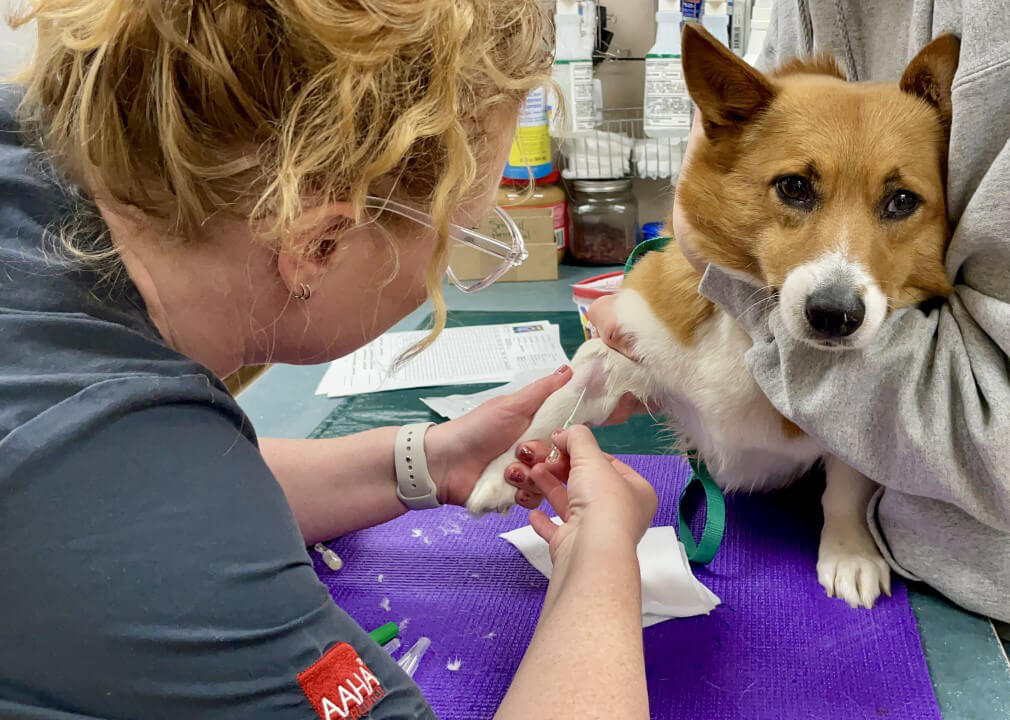
Pre-surgical bloodwork and ECG
For preventative measures, the technicians will also perform pre-surgical bloodwork and an ECG (electrocardiogram). Pre-surgical bloodwork typically consists of two different blood tests. The first test is called a Complete Blood Count (or CBC). This basic blood test shows us the levels of red blood cells, white blood cells, and platelets, which can be helpful in diagnosing anemia (low red blood cells), systemic infections, and potential blood clotting deficiencies.
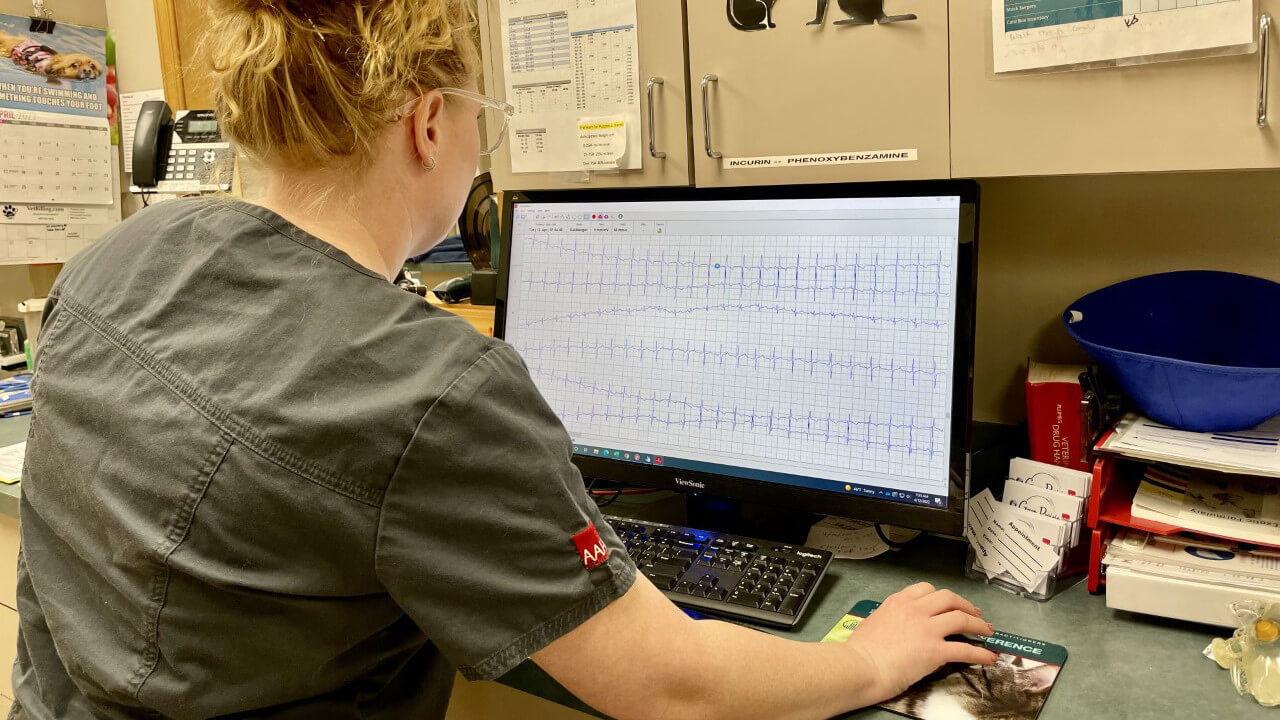
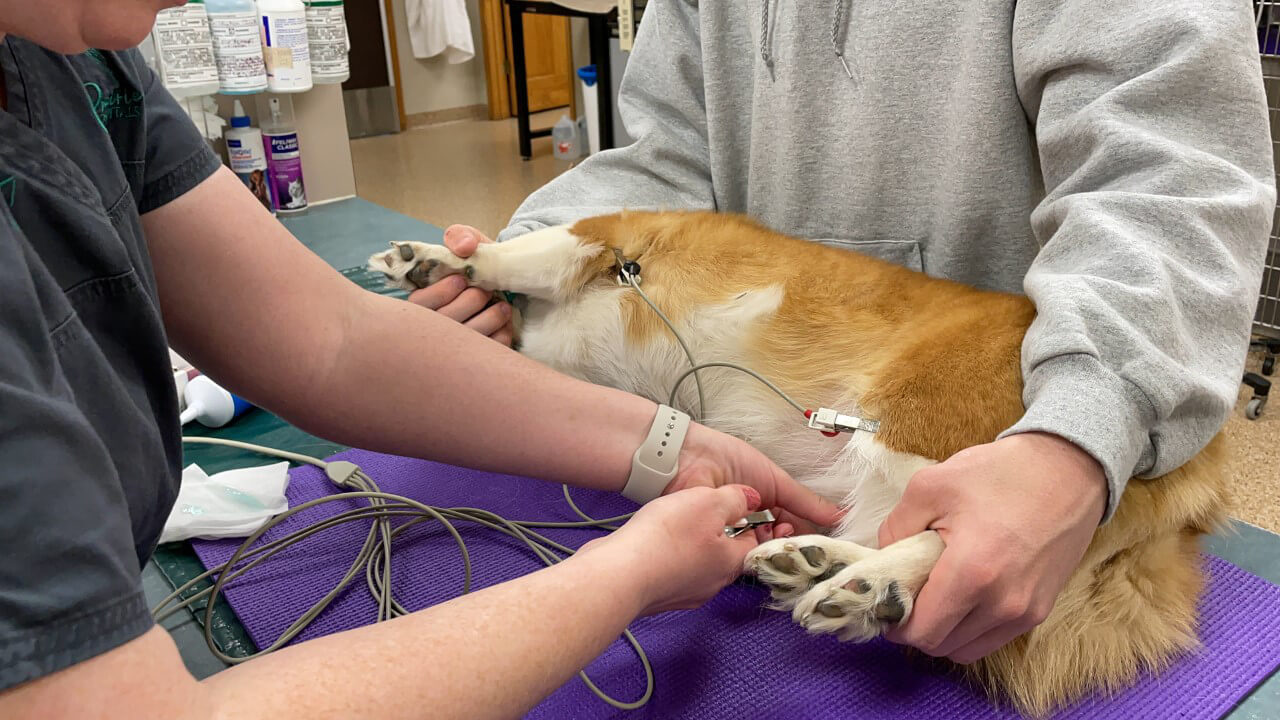
Dental Radiography
Xrays are the foundation of the entire Dental Procedure, without using xrays as a reference, we are going into the procedure blindly. At a glance, all of the teeth could look healthy and clean but only with Xrays will the Doctor be able to tell that a tooth needs treatment or surgically removed. If an unhealthy tooth is left, who knows what havoc it could wreak later on in the pets life
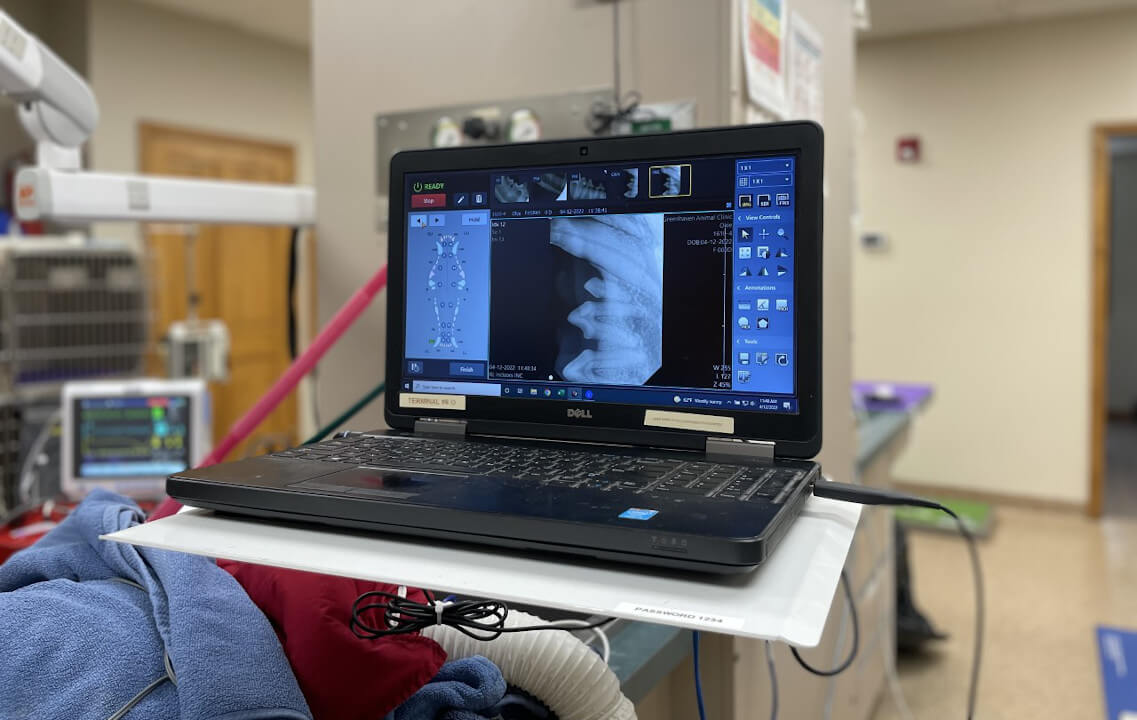
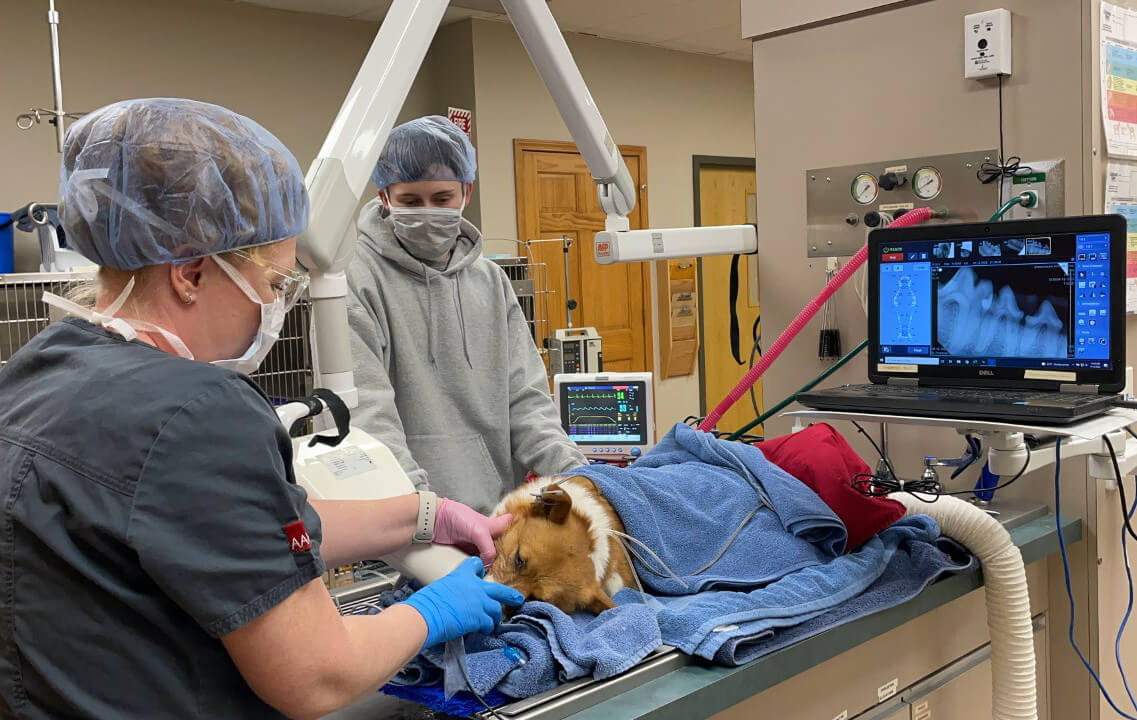
Probing the gums
Once the patient is anesthetized, he is then intubated with an oxygen tube, and hooked up to a heart monitor. The Certified Veterinary Technician (pictured is Tiffany) probes the gums with a tool to make sure there are no pockets in the gums. If there are pockets, they can be an indication of several problems including an abscesses. To prolong the life of the tooth, these pockets are packed with a medication to lessen the damage.
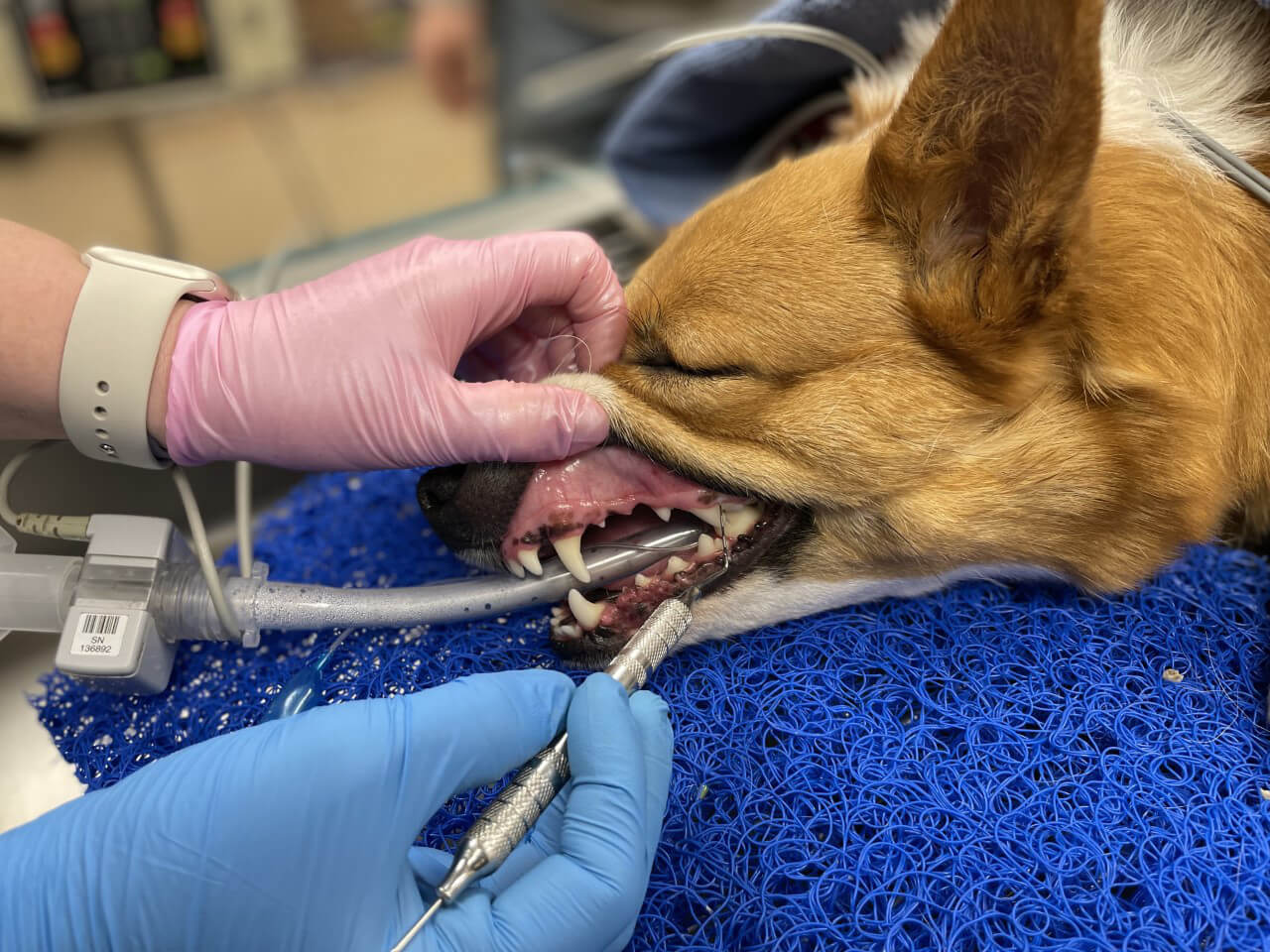
Cleaning the teeth
Cleaning the teeth is the next step. The process is very similar to the teeth cleaning for humans.

Polishing
Polishing is the next step once the teeth have been adequately cleaned. The Technician will use a rubber-tipped tool with paste on it to smooth the surface of the tooth. This helps protect the tooth and keep plaque from adhering to it in the future.

Examine & Review
The Final Step of the Procedure, Dr. Bill examines the dog’s teeth, reviews the x-rays with the Technician, and makes sure that there are no problem teeth to be surgically removed. If all is well, the patient is woken up from anesthesia to recover and monitored until their owner comes to pick them up.
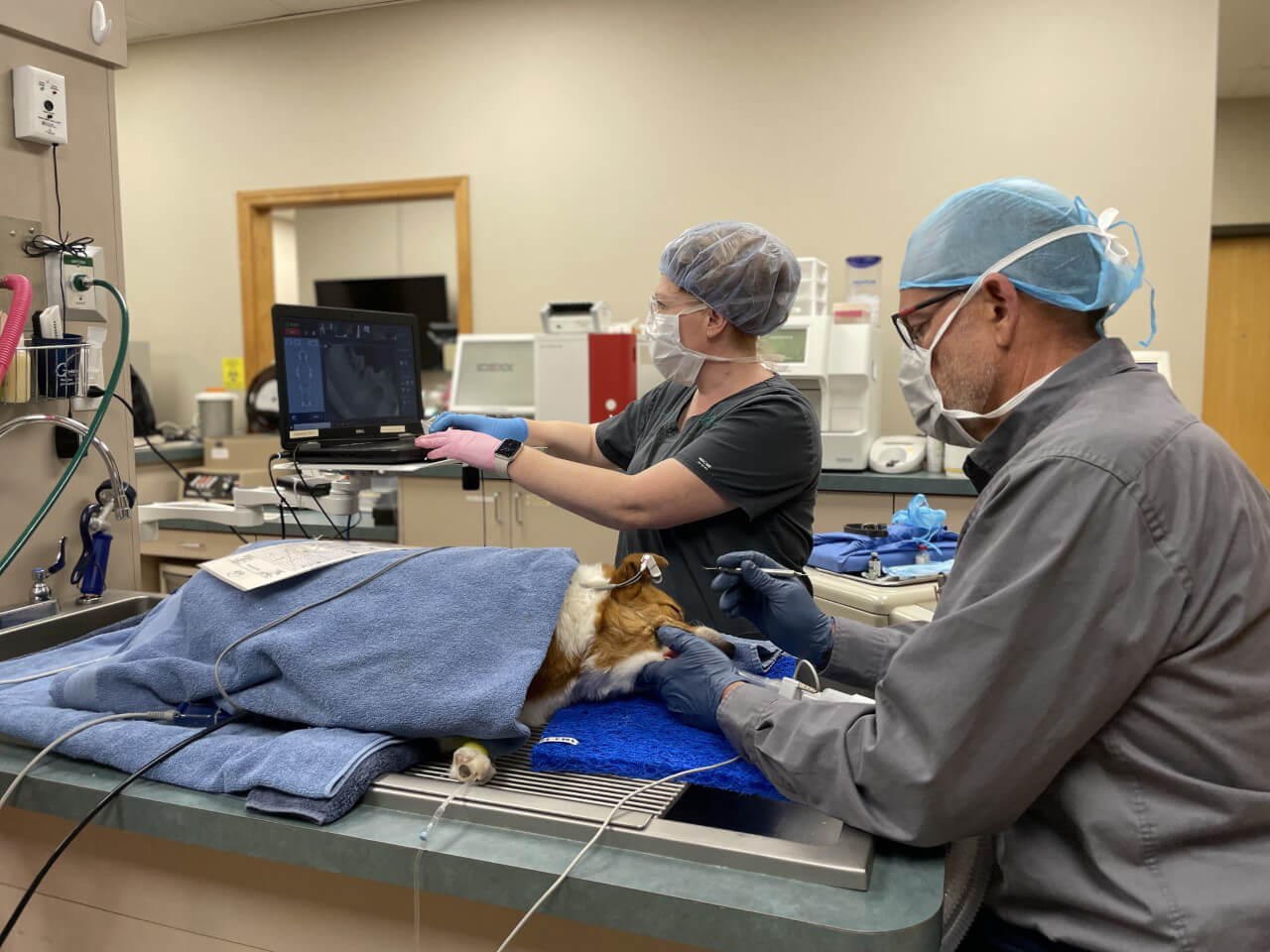
How to brush your pet's teeth
Just like in humans, dental care is an important part of your pet's overall health. Here's a step-by-step guide to keeping those chompers sparkling white at home.
- Start brushing your pet's teeth early - 8 to 12 weeks old is best. If you brush every day, your pet will become familiar with the routine when their permanent teeth erupt. Please note: You may need to stop brushing while your pet loses her baby teeth. Her mouth will be a bit sore and handling may cause more pain. Continue once all permanent teeth come in.
- Work with your pet's mouth. Be patient and make it fun. Use love and praise, and try to practice at the same time each day to establish a routine. Choose a quiet time, such as late in the evening. Or, if your pet is highly motivated by food, try just before dinner so she'll be rewarded for her cooperation.
- Handle your pet's muzzle and touch her lips. Work up to rubbing the teeth and gums with your finger. Put a few drops of water flavored with low-sodium chicken or beef bouillon for dogs and tuna juice for cats in your pet's mouth and she'll begin to look forward to these sessions.
- Rub the teeth gently with a bouillon- or tuna- flavored washcloth or a piece of gauze wrapped around the end of your finger.
- Finally, use a finger brush or a soft veterinary or human toothbrush to brush the teeth using the bouillon water or tuna juice. Hold the brush at a 45- degree angle to the tooth and brush gently back and forth or in a circular pattern from gum to tip. Brushing the tongue side of the teeth is less critical, but still good. Of- fer rewards and treats when your pet allows you to brush.
- Consider other dental aids. A large selection of veterinary toothpastes, oral rinses, and gels are available to you. Our veterinary team can help you select the right one for you and your pet. These products all enhance your home care program, but daily brushing is best. Avoid human toothpaste because fluoride and de- tergents can be harmful if swallowed. Hydrogen peroxide can be harsh on the gums and shouldn't be swallowed either. Baking soda has a high sodium content and should be avoided in older pets.
- Pick kibble and rubber chew toys that will help keep the teeth clean. Avoid natural bones, which are hard enough to fracture teeth. Our veterinary team can recommend a complete and balanced professional diet to use at feeding time and as a treat.

